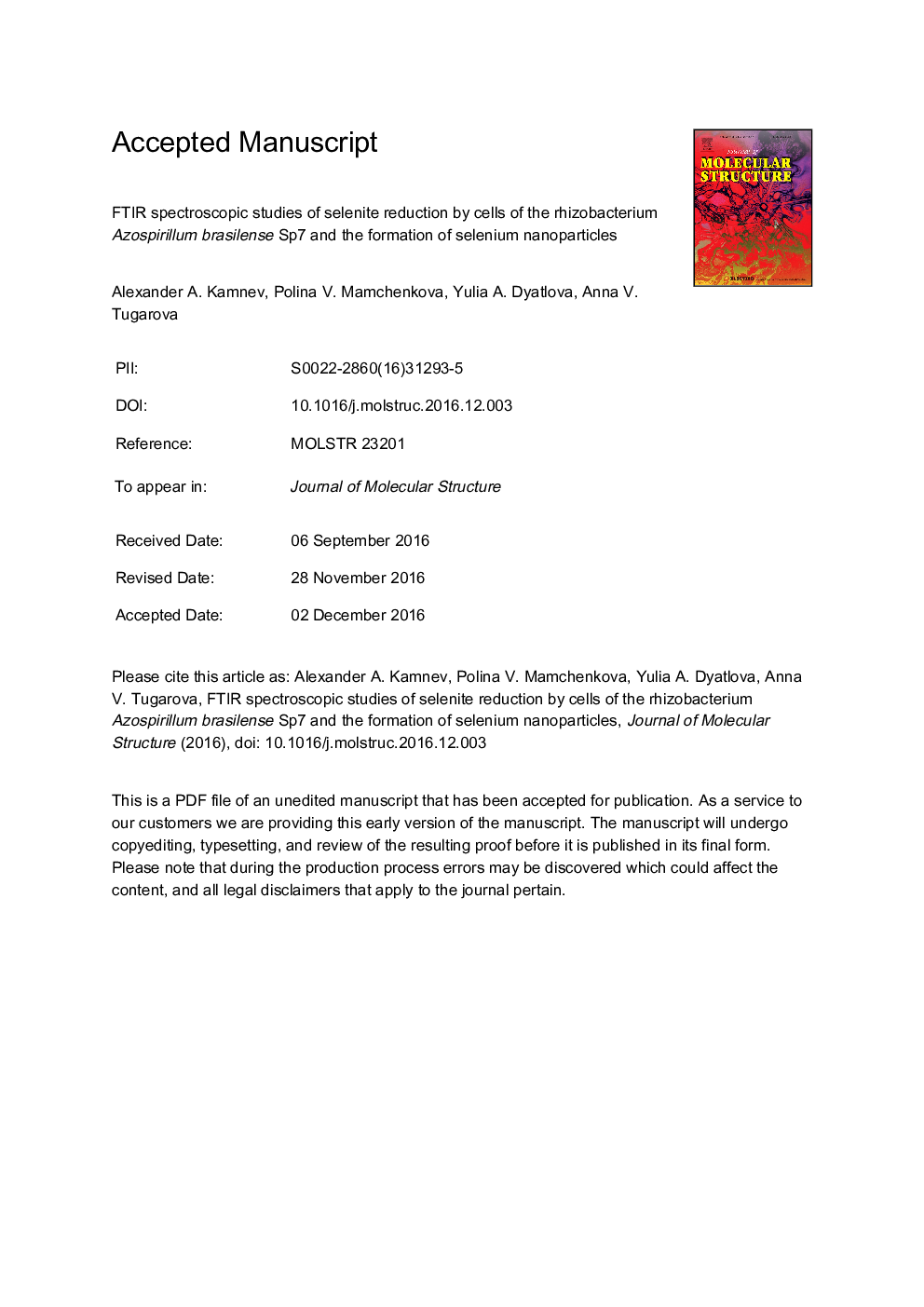| کد مقاله | کد نشریه | سال انتشار | مقاله انگلیسی | نسخه تمام متن |
|---|---|---|---|---|
| 5160344 | 1501677 | 2017 | 13 صفحه PDF | دانلود رایگان |
عنوان انگلیسی مقاله ISI
FTIR spectroscopic studies of selenite reduction by cells of the rhizobacterium Azospirillum brasilense Sp7 and the formation of selenium nanoparticles
دانلود مقاله + سفارش ترجمه
دانلود مقاله ISI انگلیسی
رایگان برای ایرانیان
کلمات کلیدی
موضوعات مرتبط
مهندسی و علوم پایه
شیمی
شیمی آلی
پیش نمایش صفحه اول مقاله

چکیده انگلیسی
Microbially driven reduction of selenium oxyanions to elementary selenium, often in the form of nanoparticles (NPs), is widespread in nature. A diversity of possible applications of such biogenic NPs, including those in nanobiotechnology, as well as the specificity of methodologies and mechanisms of their formation via “green synthesis” are very attractive features justifying further studies of the processes of selenium oxyanion bioreduction and the resulting Se0 nanostructures. In this study, live biomass of the rhizobacterium Azospirillum brasilense Sp7 (harvested after the logarithmic growth phase and washed from culture medium components) was used to obtain extracellular Se NPs relatively homogeneous in size (with average diameters within 50-100 nm) in the process of selenite reduction. Both the control cultures of A. brasilense Sp7 and those incubated with SeO32â (producing Se NPs), as well as the resulting separated Se NPs were studied using Fourier transform infrared (FTIR) spectroscopy in the transmission mode (measured as dried layers on a ZnSe disc), in addition to transmission electron microscopy (TEM), to compare metabolic changes in cells and the bioorganic layers associated with the Se NPs. In the control culture (stored for 24 h in physiological saline), FTIR spectroscopic signs of poly-3-hydroxybutyrate (a 'reserve' biopolyester) were observed as a response to the lack of nutrients (trophic stress), whereas they were virtually absent in cells incubated for 24 h in physiological saline with 10 mM SeO32â (toxicity stress). FTIR spectra of Se NPs separated from bacterial cells showed bands typical of proteins, polysaccharides and lipids associated with the particles (in line with their TEM images showing a thin layer over the NPs), in addition to strong carboxylate bands, which evidently stabilise the NP structure and morphology.
ناشر
Database: Elsevier - ScienceDirect (ساینس دایرکت)
Journal: Journal of Molecular Structure - Volume 1140, 15 July 2017, Pages 106-112
Journal: Journal of Molecular Structure - Volume 1140, 15 July 2017, Pages 106-112
نویسندگان
Alexander A. Kamnev, Polina V. Mamchenkova, Yulia A. Dyatlova, Anna V. Tugarova,